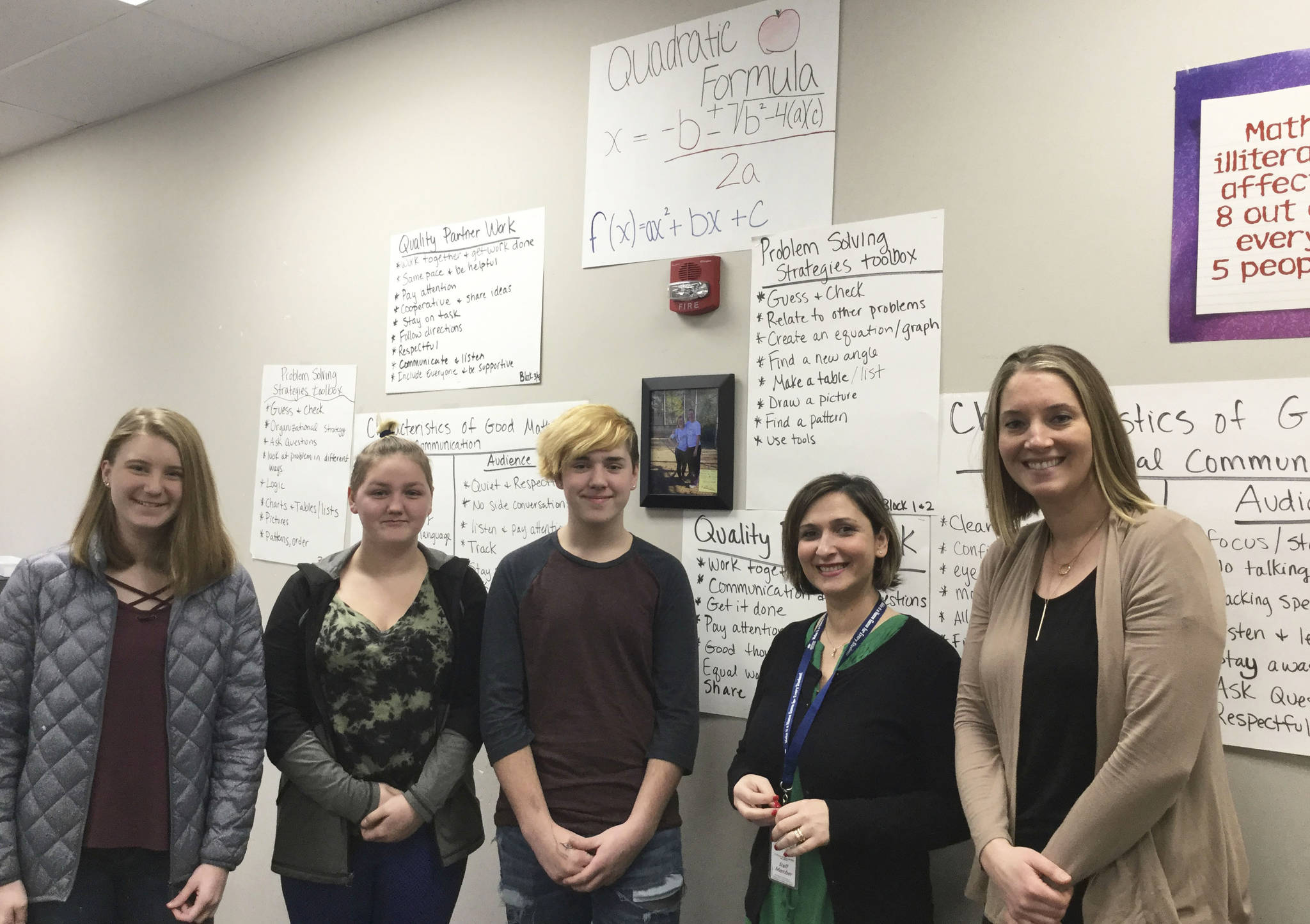ARLINGTON – Arlington High School is using a new approach to give struggling freshmen students relief from math anxiety, and keep them on track to earn the credits they need to graduate.
Math teachers launched a new intervention curriculum to help middle schoolers entering high school clear the deep chasm of Algebra 1 that is a significant obstacle for students in Arlington and elsewhere.
In districts nationwide, as many as 50 percent of students fail Algebra I the first time and must repeat it—some more than once, studies show. As a result, students get behind in gaining requirements for graduation and college, and are at greater risk of dropping out.
“We don’t want a single student to fall through the cracks anywhere,” AHS Principal Duane Fish said.
To seal those cracks, the district has been adding tiered intervention into curriculum such as math and English to provide help at increasing levels of intensity.
For example, teacher Ashleigh Beard launched Intensified Algebra in her classrooms. The extended-period course is aimed at helping students who are one to three years behind in math to re-engage as motivated learners and succeed in Algebra I within one school year. With para-educator and parent Petronilla Dayley assisting in a classroom of up to 25 students, the two can provide even more support.
“We want to make sure that students coming in are getting that one math credit right off the bat,” Beard said. “We don’t wait for failure to occur; we support the students before that happens.”
The key to Intensified Algebra is viewing a story problem from a visual and contextual standpoint, whether you’re stacking party cups and want to measure slope, studying compass points for a lost hiker, or fathoming the tile patterns in a pool, then introducing the algebraic formulas at work.
If students hit an obstacle along the way, it’s OK to make mistakes. “It is about becoming a mathematical thinker, not a calculator,” Beard said.
AHS students have three ways to take Algebra – the traditional model, Intensified Algebra or another two-block class that’s more related to business and manufacturing.
Students need three years of high school math to graduate, a track that includes algebra and geometry.
Beard explained that in past years, math-befuddled students took pre-algebra to prepare them for the standard course. However, per district policy, pre-algebra is deemed an “elective” and doesn’t count toward math requirements. Algebra 1 is the lowest level that counts.
The result was that students had to use more time to squeeze in the required math, algebra and geometry credits, and hope they didn’t have to retake any classes.
Student achievement remained stable or decreased over the past year, as measured by the state Smarter Balanced Assessment test for math.
In spring 2017 math results for Arlington Public Schools, 44 percent of 8th-graders compared with 47.6 percent statewide met the state standard; while at the next SBA testing level 11th grade found 34.6 percent at AHS met standards compared with 25.9 percent around the state. For the 11th grade scores, APS officials said the majority had already met graduation requirement for math; therefore, many chose not to take the SBA.
Algebra students said they are finding plenty of reasons to like the class, and a couple of them prided themselves on perfect scores on recent tests.
“Intensified kind of scared me a bit at first,” student Anessa Adams said. “I was just used to being in regular math classes.”
She likes that there are two teachers, so that means extra attention when needed.
Hailey Zastoupil, said she wasn’t interested in math last year and did the bare minimum. But with the way Intensified Algebra is presented, she said, “I enjoy it more, and I don’t need to use my time out of school. I can do the work in class.”
Axtin Vandewerfhorst likes that the class is at their own pace, with more time to get things done.
Also, “It’s easy to get caught up because everything goes together,” he added. “Like if you’re behind on something, and you learn something new in the next unit, it makes doing the assignment easier.
In eighth grade, he said, “Teachers always said that the math was real-life, but it wasn’t until this class that it shows actual examples.”
Dayley said that’s a strength of the program, taking everyday situations that kids can recognize. “We get very little ‘what am I going to do with this math,’ or ‘when am I going to see the math;’ a typical question, normally, but not in this class,” Dayley said. “They go from what they see to the theory of it. Context, then algebra. These kids aren’t frightened at all by the story problems.”
Beard said, “It’s the idea that we’re teaching kids how to think and make sense of things instead of computing things.”
Beard has been involved with intervention programs at the freshman level before. She is seeing measurable gains in test scores.
“I have documented how many kids have F’s, D’s in eighth-grade math, and how our grades are this year,” she said. “Same group of kids, different schools, you can see already that the number of D’s and F’s was significantly greater. Now those are my B’s and C’s kids.”
Hailey joked, “No, we were replaced by robots.”
The district was awarded a $22,000 four-year grant through College Sparks Washington, which pays for the curriculum and materials.
Fish said another strong point of the curriculum is the growth mindset, with kids realizing that once they learn they can do the work, they’re more confident.
“How many kids and adult have we heard say, ‘I’m not a math person or I’m not good at math?’” he said. Now they’ve got kids on the edge thinking, “I’m not good at math – yet.”



